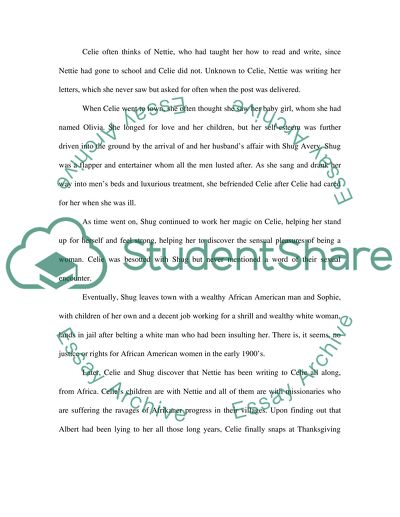
Universalist view Berlin and Kay. The universalist theory that color cognition is an innate, physiological process rather than a cultural one was introduced in by Brent Berlin and Paul Kay in their book Basic Color Terms: Their Universality and Evolution. Their study was intended to challenge the formerly prevailing theory of linguistic relativity set forth by Edward Sapir and Benjamin If you add too much black, your color will be almost black. Another way to darken a color is to mix in some of the complementary color (the opposite color on a color wheel - see below). This produces a rich, dark color (richer than just adding black). Some pairs of complementary colors are: blue/orange, green/red, yellow/purple, black/white Black roses are another color that is not found in nature. Natural roses that are called “black” are actually a very dark red or purple color. True black roses can only be obtained through dyeing. Black roses symbolize death, rebirth, and goodbye. Black Roses Meaning.
List of color palettes - Wikipedia
The concept of linguistic relativity concerns the relationship between language and thoughtspecifically whether language influences thought, and, if so, how? This question has led to research in multiple disciplines—including anthropologycognitive sciencelinguisticsand philosophy. Among the most debated theories in this area of work is the Sapir—Whorf hypothesis.
This theory states that the language a person speaks will affect the way that this person thinks. There are two formal sides to the color debate, the universalist and the relativist. The universalist side claims that the biology of all human beings is all the same, the color purple essay topics, so the development of color terminology has absolute universal constraints.
The relativist side asserts that the variability of color terms cross-linguistically from language to language points to more culture-specific phenomena. Because color exhibits both biological and linguistic aspects, it has become a focus of the study of the relationship between language and thought. The color debate was made popular in large part due to Brent Berlin and Paul Kay 's famous study and their subsequent publishing of Basic Color Terms: Their Universality and Evolution.
The universalist theory that color cognition is an innate, physiological process rather than a cultural one was introduced in by Brent Berlin and Paul Kay in their book Basic Color Terms: Their Universality and Evolution. Berlin and Kay found universal restrictions on the number of basic color terms BCTs that a language can have, and on the the color purple essay topics the language can use these terms.
The study included data collected from speakers of twenty different languages from a range of language families. Berlin and Kay identified eleven possible basic color categories: white, black, red, green, yellow, blue, the color purple essay topics, purple, pink, the color purple essay topics, orange, and gray. To be considered a basic color category, the term for the color the color purple essay topics each language had to meet certain criteria:.
Berlin and Kay also found that, in languages with fewer than the maximum eleven color categories, the colors followed a specific evolutionary pattern. This pattern is as follows:. In addition to following this evolutionary pattern absolutely, each of the languages studied also selected virtually identical focal hues for each color category present.
For example, the term for "red" in each of the languages corresponded to roughly the same shade in the Munsell color system. Consequently, they posited that the cognition, or perception, of each color category is also universal. A later study supporting this universal, physiological theory was done by Kessen, Bornstein, and Weiskopf. In the color purple essay topics study, sixteen four-month-old infants were presented with lights of different frequencies corresponding to different colors.
The lengths of habituation were measured and found to be longer when the infant was presented with successive hues surrounding a certain focal color than with successive focal colors.
This pattern of response is what is expected when the infants are distinguishing between the focal colors, but not distinguishing between successive hues i.
different shades of red are all "red" but "blue" and "red" focal colors are different. This is to say that infants respond to different hues of color in much the same way as adults do, demonstrating the presence of color vision at an age younger than the color purple essay topics expected.
Kessen, Bornstein and Weiskopf therefore claim that the ability to perceive the same distinct focal colors is present even in small children. In their paper Language and thought: Which side are you on anyway? discuss the presence of a universalist perspective on the color debate in the mid-nineteenth century.
They proposed a universal evolutionary sequence in which color vocabulary evolves in tandem with an assumed biological evolution of the color sense". Gladstone was a Homeric scholar and in his writings, notably Studies on Homer and the Homeric Ageexpressed that, because there was virtually a lack of color terminology in Homeric Greek literature, Greeks could probably not see color the same way people see color today.
that the organ of color and its impressions were but partially developed among the Greeks of the heroic age". Geiger expanded on Gladstone's ideas by looking at other classic works and hypothesized that man gradually became aware of color over time.
He posited the idea that this awareness was connected to the order colors came up in the spectrum, starting with longest wavelengths. Lenneberg and Roberts presented their paper The Denotata of Color Terms [10] at the Linguistic Society of America in In this paper they reported their findings on color recall in Zuni speakers.
Zuni has one color term for yellow and orange, and Lenneberg and Roberts' study reported that Zuni speakers encountered greater difficulty in color recall for these colors than English speakers, who have available terms to distinguish them. Brown and Lenneberg attributed this effect to the property of codability. Linguistic codability is whether naming an object is difficult or not. It also includes a focus on the effect that naming can have on behavior and cognition.
Brown and Lenneberg published A Study in Language and Cognition [12] inwhere they discussed the effect of codability on the color purple essay topics. In their experiment they used a series of Munsell chips to test color recall and recognition in English speakers. Their findings suggested that the availability of a basic color term in a given language affected the retention of that color in recall testing. Brown and Lenneberg linked their study to Lenneberg and Roberts' findings on color recall in Zuni speakers.
Initially, Berlin and Kay's theory received little direct criticism. But in the decades since their book, a significant scholarly debate has developed surrounding the universalism of color terminology. Many relativists find significant issues with this universalism. Discussed below, Barbara Saunders and John A. Lucy are two scholars who are prominent advocates of the opposing relativist position. Also, Daniel Everett 's work on the Pirahã language of the Brazilian Amazon[13] a controversial case, found several peculiarities, including what he interpreted as the Pirahã language's lack of color terms in the way those are otherwise defined, the color purple essay topics.
Everett's conclusions were met with skepticism the color purple essay topics universalists, [14] who claimed that the linguistic deficit is explained by the lack of need for such concepts. Barbara Saunders believes that Berlin and Kay's theory of basic color terminology contains several unspoken assumptions and significant flaws in research methodology.
Included in these assumptions is an ethnocentric bias based on traditions of Western scientific and philosophical thought, the color purple essay topics. She regards the evolutionary component of Berlin and Kay's theory as "an endorsement of the idea of progress" and references Smart's belief that it is "a Eurocentric narrative that filters everything through the West and its values and exemplifies a universal evolutionary process of modernization.
With regard to Berlin and Kay's research, Saunders criticizes the translation methods used for the color terms they gathered from the 78 languages they had not studied directly.
Like many others, she also questions the effectiveness of using the Munsell color system in the elicitation of color terminology and identification of focal hues. She feels that "use of this chart exemplifies one of the mistakes commonly made by the social sciences: that of taking data-sets as defining a laboratory phenomenon which supposedly represents the real world", and entails "taking a picture of the world for the world and then claiming that that picture is the concept".
Finally, she takes issue with the anomalous cases of color term use that she believes Berlin, Kay and Merrifield disregarded in their work on the World Color Survey for the purpose of purifying their results.
In Saunders' article with van Brakel, they criticize the amount of weight given to the study of physiological color perception as support for the universalism of color terminology. They primarily criticize the idea that there is an autonomous neuro-physiological color pathway, citing a lack of concrete evidence for its existence.
Saunders is also bothered by the overall de-contextualization of color terminology and the failure of universalists to address the limitations of their methodologies. She points out that: [16]. Ordinary colour talk is used in a variety of ways — for flat coloured surfaces, surfaces of natural objects, patches of paintings, the color purple essay topics, transparent objects, shining objects, the sky, flames, illumination, vapours, volumes, films and so on, all of which interact with overall situation, illumination, edges, textures, the color purple essay topics, patternings and distances, making the concept of sameness of colour inherently indeterminate, the color purple essay topics.
John A. Lucy 's criticisms of Berlin and Kay's theory are similar to those of Saunders and other relativists, primarily focusing on shortcomings in research methodologies and the assumptions that underlie them. Lucy believes that there are problems with how linguistic analysis has been used to characterize the meanings of color terms across languages. Referential range what a color term can refer to and grammatical distribution how the term can be used are two dimensions Lucy believes are critical to defining the meaning of a term, the color purple essay topics, both of which "are routinely ignored in research on color terms which focuses primarily on denotational overlap across languages without any consideration of the typical use of the terms or their formal status.
Lucy also believes that there is significant bias present in the design the color purple essay topics Berlin and Kay's research, due to their English-speaking and Western points of view. He thinks the use of the Munsell color system demonstrates their adherence to the ideas that "speech is about labeling accuracy" and that "Meaning is really about accurate denotation," which he believes " both derive directly from the folk understandings of English speakers about how their language works.
He demonstrates that "an 'adequate knowledge' of the system would never have been produced by restricting the stimuli to color chips and the task of labeling" original emphasis. In summation, he feels that the approach universalists have taken in researching color term universals sets up a procedure that " guarantees both their discovery and their form," and that, "It does not really even matter whether the researchers involved are open-minded and consciously willing to recognize relativism as a possible outcome—because the universalist conclusion is guaranteed by their methodological assumptions.
Scholarship on color vision has proceeded in three principal domains within the last twenty years. In Paul Kay and Luisa Maffi published an article entitled Color Appearance and the Emergence and Evolution of Basic Color Lexicons[20] in which they outline a series of revisions in response to data collected in the World Color Survey WCS and to Stephen Levinson and his work on the language Yélî Dnye in Papua New Guinea see below.
The ordering of these rules is reflective of the data of the overwhelming majority of languages studied in the WCS.
However, exceptions do exist, as was accounted for by Yélî Dnye and other languages within the WCS, the color purple essay topics.
Furthermore, they also propose a 0 rule, one which simply states: partition. Such a rule is necessary to motivate the specification of later basic color terms, namely those that can no longer be brought about by application of rules 1 —3. With respect to the evolution of color terms within a given lexicon, Kay and Maffi further outlined the possibilities of different trajectories of evolution, though all of those numerically possible are not attested in the World Color Survey.
Another significant contribution of this article is a discussion of the Emergence Hypothesis see belowits relation to Yélî Dnye, and its motivation for the authors' revision of evolutionary trajectories, the color purple essay topics.
The Yele language is a language isolate spoken on Rossel Island in Papua New Guinea. Given the fact that such color naming words are extremely inventive, a "semi-productive" mode of adjectival derivation is the duplication of related nounsLevinson argues that this is highly detrimental to the BCT-theory, insomuch that Yele is "a language where a semantic field of color has not yet jelled", and thus one not open to universal constraint. As Levinson points out, there is evidence that supports the emergence of BCTs through physical objects and words used to signify simultaneous properties such as lightness.
As such, these terms do not cohere as a unique, the color purple essay topics, separable semantic domain denoting hue see Bornstein for this criterion. Over time, though, and through processes of semantic changesuch a domain can emerge. In response to work by Levinson and Lyons, Kay dubs this perspective the Emergence Hypothesis EH. This inverts their Partition Principles see abovenamely by placing 1 and 3 over 0 and 2. That is, languages partially segment the space into black, white, and red i.
However, this model also introduces the possibility for previously divergent evolutionary paths for color terms, since it is only after the rearrangement and reassignment of the Partition Principles that a language that derived from EH origins joins with a language that originally partitioned the whole of the color spectrum.
In an article titled The Semantics of Colour: A New Paradigm[25] Wierzbicka discusses three main critiques of the universalist approach:. With regard to 1she states that "the basic point is that, in many languages, one cannot ask the question, the color purple essay topics, 'What color is it? On the other hand, she argues that even if one contests the first point i.
In the structure of her Natural Semantic Metalanguagethe color purple essay topics, [27] color does not constitute a semantic "primitive", though she argues for many others cross-linguistically, the color purple essay topics.
For more on the NSM related to color terms, see Theoretical Linguistics Their study proceeds to three main questions:. With regard to 1they find that color terms are not acquired any later than other relevant lexemes to distinguish objects.
It had been thought, for example, that since color is not necessarily unique to a given the color purple essay topics, and diverse objects are more likely to share common color than a common shape, that color terms lagged behind shape terms in development.
This was found not to be the case.
SUMMARY THE COLOUR PURPLE
, time: 2:41Nettie Character Analysis in The Color Purple | SparkNotes

May 14, · The first figure is shorter. The color of its mane is a vibrant shade of pink, violet, and yellow. The second is taller by an inch or two. The blue and pink locks of mane are neatly tied in a braid. A row of seven picture frames are beside the tall action figure. Under the table is a huge purple container packed with old clothes Black roses are another color that is not found in nature. Natural roses that are called “black” are actually a very dark red or purple color. True black roses can only be obtained through dyeing. Black roses symbolize death, rebirth, and goodbye. Black Roses Meaning. Feb 27, · Simply put, tints, tones and shades are variations of hues, or colors, on the color wheel.A tint is a hue to which white has been added. For example, red + white = pink. A shade is a hue to which black has been added. For example, red + black = burgundy. Finally, a tone is a color to which black and white (or grey) have been added. This darkens the original hue while making the color appear

No comments:
Post a Comment